#africa orientale
Explore tagged Tumblr posts
Text
Foglie fresche di Khat: origine, effetti e pericoli di una droga stimolante. Di Alessandria today
Una pianta tradizionale dell’Africa Orientale con effetti simili alle anfetamine: tutto quello che c’è da sapere sul khat
Una pianta tradizionale dell’Africa Orientale con effetti simili alle anfetamine: tutto quello che c’è da sapere sul khat Le foglie fresche di khat (Catha edulis) sono una sostanza vegetale utilizzata da secoli in alcune parti del mondo per le loro proprietà stimolanti ed euforizzanti. Sebbene il consumo sia una pratica culturale diffusa in diverse aree del Corno d’Africa e della Penisola…
#abuso di sostanze#Africa orientale#Alessandria today#Allucinazioni#anfetamina#ansia#catina#catinone#consumo di khat#consumo droga#consumo responsabile#contrasto traffico droga#Cultura e Tradizione#Dipendenza#Droga#droghe naturali#effetti collaterali#effetti del khat#etiopia#foglie di khat#Google News#Italia antidroga#italianewsmedia.com#Kenya#khat#legalità e sicurezza#legislazione stupefacenti#lotta narcotraffico.#mercato illegale#normativa antidroga
0 notes
Text
Calendario 2025 - La colonizzazione italiana dell'Africa
Non c’è bugia, non c’è mistificazione, non c’è esagerazione che possa cancellare quanto realizzato dai coloni italiani in Africa per creare commerci, lavoro e sviluppo: colonizzatori non colonialisti.Il nuovo calendario per l’anno 2025 raccoglie 12 tra le immagini più rappresentative dell’opera che l’Italia realizzò in Somalia creando il Villaggio Duca degli Abruzzi con 760 km di canali. Fu…
#africa orientale#calendario 2025#colonizzazione#fascismo#luigi di savoia#sais#villaggio duca degli abruzzi
1 note
·
View note
Text
Pillole di Seconda Guerra Mondiale: 8 aprile
1940 – Norvegia: Ha inizio l’operazione Wilfred: i cacciatorpediniere britannici iniziano a stendere campi minati nelle acque territoriali norvegesi, nonostante le proteste del governo di Oslo. 1940 – Norvegia: il sommergibile polacco Orzel affonda nello Skagerrak, il tratto di mare che separa la Norvegia dalla Danimarca, il mercantile tedesco Rio de Janeiro, carico di truppe dirette in…

View On WordPress
#8 aprile 1940#8 aprile 1941#8 aprile 1942#8 aprile 1943#8 aprile 1944#8 aprile 1945#Africa Orientale#Africa Orientale Italiana#Battaglia di Crimea#Massaua#Operazione Wilfred#second world war#Seconda guerra mondiale#Wordl War Two
0 notes
Text
Nelle colonie africane la giustizia militare ebbe un ruolo preponderante nella gestione della giustizia in generale
Se i vari governi del Regno si dimostrarono così duri nei confronti dei sudditi in patria, si può immaginare con quale decisione e brutalità operassero nei domini d’oltremare. Nelle colonie africane la giustizia militare ebbe un ruolo preponderante nella gestione della giustizia in generale e conseguentemente nel mantenimento dell’ordine pubblico. In Eritrea e in Libia l’amministrazione della…
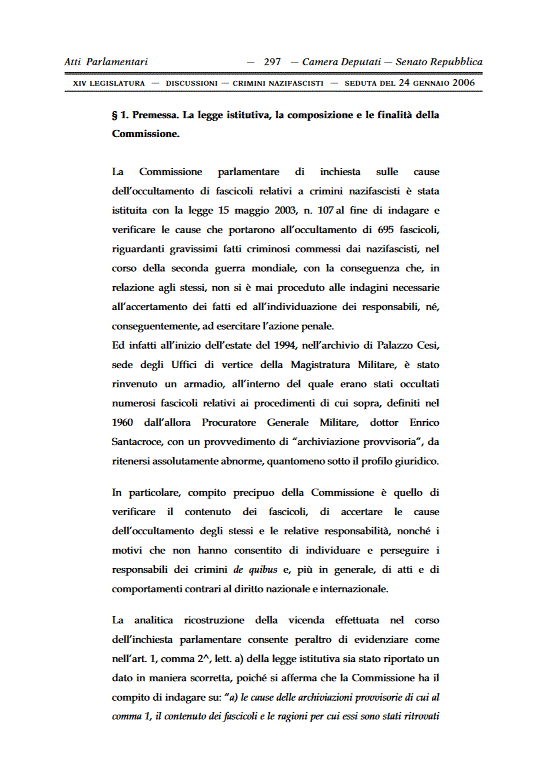
View On WordPress
0 notes
Text
Nelle colonie africane la giustizia militare ebbe un ruolo preponderante nella gestione della giustizia in generale
Se i vari governi del Regno si dimostrarono così duri nei confronti dei sudditi in patria, si può immaginare con quale decisione e brutalità operassero nei domini d’oltremare. Nelle colonie africane la giustizia militare ebbe un ruolo preponderante nella gestione della giustizia in generale e conseguentemente nel mantenimento dell’ordine pubblico. In Eritrea e in Libia l’amministrazione della…

View On WordPress
0 notes
Text
Nelle colonie africane la giustizia militare ebbe un ruolo preponderante nella gestione della giustizia in generale
Se i vari governi del Regno si dimostrarono così duri nei confronti dei sudditi in patria, si può immaginare con quale decisione e brutalità operassero nei domini d’oltremare. Nelle colonie africane la giustizia militare ebbe un ruolo preponderante nella gestione della giustizia in generale e conseguentemente nel mantenimento dell’ordine pubblico. In Eritrea e in Libia l’amministrazione della…

View On WordPress
0 notes
Text
Nelle colonie africane la giustizia militare ebbe un ruolo preponderante nella gestione della giustizia in generale
Se i vari governi del Regno si dimostrarono così duri nei confronti dei sudditi in patria, si può immaginare con quale decisione e brutalità operassero nei domini d’oltremare. Nelle colonie africane la giustizia militare ebbe un ruolo preponderante nella gestione della giustizia in generale e conseguentemente nel mantenimento dell’ordine pubblico. In Eritrea e in Libia l’amministrazione della…
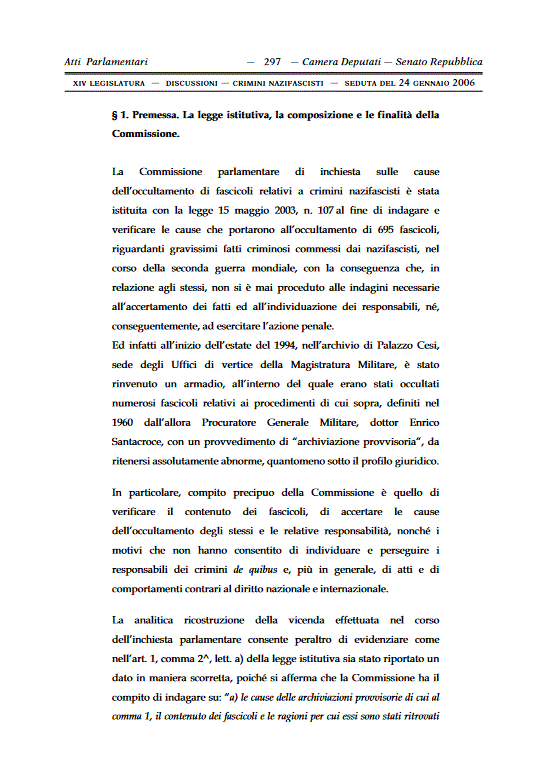
View On WordPress
0 notes
Text
Nelle colonie africane la giustizia militare ebbe un ruolo preponderante nella gestione della giustizia in generale
Se i vari governi del Regno si dimostrarono così duri nei confronti dei sudditi in patria, si può immaginare con quale decisione e brutalità operassero nei domini d’oltremare. Nelle colonie africane la giustizia militare ebbe un ruolo preponderante nella gestione della giustizia in generale e conseguentemente nel mantenimento dell’ordine pubblico. In Eritrea e in Libia l’amministrazione della…
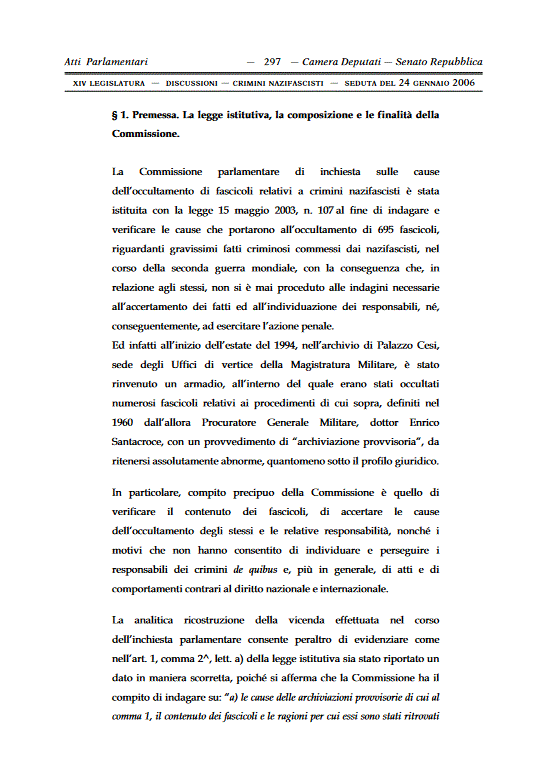
View On WordPress
1 note
·
View note
Text
Fu soprattutto ai tre libri sui suoi viaggi in Africa Orientale che Vergani dovette il proprio successo e la nomea di primo fotoreporter italiano
Le narrazioni critiche verso il sistema imperialistico certo non abbondano nel nostro corpus. Tuttavia, una strategia per certi versi comparabile a quella di Rafanelli può forse essere rinvenuta in un romanzo contemporaneo a “L’oasi”: “Io, povero negro” di Orio Vergani <54. Milanese classe 1898, Vergani contribuì attivamente alla formazione della «coscienza coloniale» degli italiani sia…

View On WordPress
#Achille Campanile#Africa#Aldo Palazzeschi#autocensura#Bagutta#colonialismo#colonie#diari#Emilio Cecchi#fascismo#fotoreporter#Francesco Casales#giornalista#Giovanni Comisso#libri#negro#nera#Orientale#Orio Vergani#povero#premio#Sibilla Aleramo#Via#viaggi
1 note
·
View note
Text










I FORTI DI MESSINA
Unita l’Italia dopo l’impresa dei Mille, L’esercito Italiano preparò ed eseguì un piano per massimizzare la difesa del territorio della neonata Patria. Per questo motivo la loro attenzione si concentrò sullo stretto, una tappa importante di quell’autostrada del mare che dal nord Tirreno portava fino al Mediterraneo Orientale e al Nord Africa e quindi alle nuove colonie. Per questo motivo, per difendere lo stretto, vennero realizzati ben quattordici forti distribuiti lungo la costa ionica e sulle colline prospicenti lo stretto. Alcuni, come Forte Cavalli (o monte Gallo), Forte Masotto e Forte Pietrazza, erano muniti di numerosi obici e cannoni di grossa gittata puntati sullo stretto con lo scopo di impedire sbarchi o l’approssimarsi alla città delle navi nemiche. Altri Forti erano posizionati in modo da proteggere da attacchi di terra provenienti dalla costa Tirrenica i forti più importanti o fungevano da polveriere o da centro delle comunicazioni. I forti furono comunque inutili durante l’estate del 1943, quando gli americani di Patton, provenendo da Palermo, entrarono in città ponendo fine ai bombardamenti dal cielo e dal mare, che l’avevano distrutta completamente.
La maggior parte dei Forti sono ancora visitabili, gestiti da associazioni volontarie o comunali. Altri sono stati distrutti sia dalla guerra che dall’ammodernamento urbanistico. Solo il Forte di Antennamare è ancora in servizio in quanto posizionato nel punto più alto dei monti che circondano la città, ed è necessario per le comunicazioni militari.
After Italy was united thanks to the Garibaldi's Expedition, the Italian army prepared and executed a plan to maximize the defense of the territory of the new homeland. For this reason, their attention was focused on the strait, an important stop on the sea highway that led from the northern Tyrrhenian to the Eastern Mediterranean and North Africa and therefore to the new colonies. For this reason, to defend the strait, fourteen forts were built along the Ionian coast and on the hills overlooking Messina. Some, such as Forte Cavalli (or Monte Gallo), Forte Masotto and Forte Pietrazza, were equipped with numerous howitzers and long-range cannons aimed at the strait with the aim of preventing landings or the approach of enemy ships to the city. Other forts were positioned in such a way as to protect the most important forts from land attacks from the Tyrrhenian coast or served as powder magazines or communications centers. The forts were however useless during the summer of 1943, when Patton's division, coming from Palermo, entered the city putting an end to the bombings from the sky and the sea, which had completely destroyed it.
Most of the forts can still be visited, managed by voluntary or municipal associations. Others have been destroyed both by the war and by urban modernization. Only the Antennamare Fort is still in service as it is positioned at the highest point of the mountains surrounding the city, and is necessary for military communications.
20 notes
·
View notes
Text
Malindi: colori, tradizioni e autenticità con i Mamies sulla spiaggia
Una passeggiata sulla spiaggia di Malindi tra parei colorati e storie di artigianato locale.
Una passeggiata sulla spiaggia di Malindi tra parei colorati e storie di artigianato locale. Sulla splendida costa del Kenya, a Malindi, le spiagge bianche e il mare cristallino offrono uno scenario incantevole per i turisti. Ma oltre alla bellezza naturale, ciò che rende unica questa località è la vivace presenza dei Mamies, venditori ambulanti che espongono i loro parei colorati, catturando…
#Accessori Fatti a Mano#Accoglienza#Africa orientale#Alessandria today#Alessandria Today cultura.#Alessandria today lettori#arte tradizionale#artigianato africano#artigianato locale#Autenticità#Bellezze naturali#Colori#costa africana#cultura africana#cultura keniota#economia locale#esperienze autentiche#Gioielli#Google News#italianewsmedia#italianewsmedia.com#Kenya#Malindi#Mamies#Mare cristallino#moda africana#Natura#Oceano#Parco Nazionale Marino#pareo
0 notes
Text
Colonialismo. Un anno fa la figuraccia dei Musei Reali di Torino: prima le bugie poi le scuse
Un anno si creava uno spartiacque nella storia della colonizzazione italiana dell’Africa. Accadeva a Torino grazie, o per colpa, della mostra “Africa. Le collezioni dimenticate” inaugurata a fine ottobre 2023.Un’esposizione ideologica, superficiale e mistificatoria. ISCRIVITI AL CANALE TELEGRAM “ITALIA COLONIALE” PER RICEVERE TUTTI GLI AGGIORNAMENTI L’analisi critica di chi scrive esce su…
#africa#africa orientale#alberto alpozzi#bugie coloniali#cecilia pennaccini#collezioni dimenticate#colonialismo#colonizzazione#enrica pagella#fascismo#Musei reali#schiavismo#somalia#Torino
0 notes
Text
Medaglie d'Oro della 2ª Guerra Mondiale - Sottotenente GUALTIERO SERAFINO - Passo La Faruch (Somaliland), 17 luglio 1940
Nome e CognomeGualtiero SerafinoLuogo e data di nascitaRoma, 19 giugno 1919Forza ArmataRegio EsercitoArmaFanteriaCorpo o specialitàRegio Corpo Truppe ColonialiRepartoLXVI battaglione coloniale somaloUnitàGradoSottotenente di complementoAnni di servizio1934 – 1940Guerre e campagneGuerra d’AbissiniaSeconda Guerra Mondiale (Occupazione del Somaliland)Luogo e data dell’eventoPasso La Faruch,…
0 notes
Text
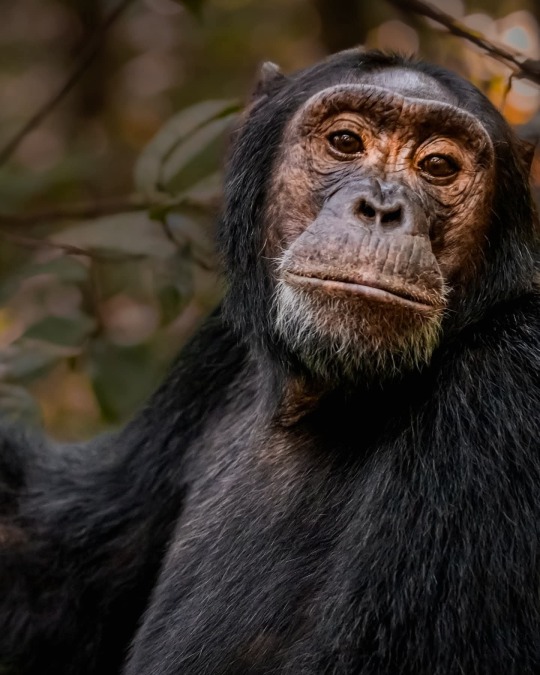
Gian Luca Tognon, photographer
chimp-portrait
Scimpanzè orientale Eastern Chimpanzee .
Pan troglodytes schweinfurthii Africa -Uganda Taken August 21, 2023
11 notes
·
View notes
Text


This is a message to my black brothers and sisters
Learn about your history
Ethiopia is one of the oldest countries in Africa; the emergence of Ethiopian civilization dates back thousands of years. Abyssinia or rather "Ze Etiyopia" was ruled by the Semitic Abyssinians (Habesha) composed mainly of the Amhara and Tigray, the Cushitic Agaw. In the Eastern escarpment of the Ethiopian highlands and more so the lowlands was the home of the Arab-descended Harari that founded Sultanates such as Ifat and Adal and the Afars. In the central and south were found the ancient Sidama and Semitic Gurage, among otheres. One of the first kingdoms to rise to power in the territory was the kingdom of D'mt in the 10th century BC, which established its capital at Yeha. In the first century AD the Aksumite Kingdom rose to power in the modern Tigray Region with its capital at Aksum and grew into a major power on the Red Sea, subjugating South Arabia and Meroe and its surrounding areas. In the early fourth century, during the reign of Ezana, Christianity was declared the state religion. Ezana's reign is also when the Aksumites first identified themselves as "Ethiopians", and not long after, Philostorgius became the first foreign author to call the Aksumites Ethiopians.[The Aksumite empire fell into decline with the rise of Islam in the Arabian peninsula, which slowly shifted trade away from the Christian Aksum.[citation needed] It eventually became isolated, its economy slumped and Aksum's commercial domination of the region ended.The Aksumites gave way to the Zagwe dynasty, who established a new capital at Lalibela before giving way to the Solomonic dynasty in the 13th century. During the early Solomonic period, Ethiopia went through military reforms and imperial expansion that allowed it to dominate the Horn of Africa.
How did Ethiopia Resist Imperialism?
Ethiopia, formerly Abyssinia, is one of the world’s oldest countries. Dating to around 400 BCE, the region is documented in the in the King James Version of the Bible as the Kingdom of Axum. Along with Rome, Persia, and China, Axum was considered one of the four great powers of the era. Throughout the millennia of its history, the willingness of the country’s people—from farmers to kings—to come together as one, coupled with its geographic isolation and economic prosperity, helped Ethiopia score decisive victories against a series of global colonialist forces.
Ethiopia is considered “never colonized” by some scholars, despite Italy's occupation from 1936–1941 because it did not result in a lasting colonial administration.
Seeking to expand its already considerable colonial empire in Africa, Italy invaded Ethiopia in 1895. In the ensuing First Italo-Ethiopian War (1895-1896), Ethiopian troops won a crushing victory over Italian forces at the Battle of Adwa on March 1, 1896. On October 23, 1896, Italy agreed to the Treaty of Addis Ababa, ending the war and recognizing Ethiopia as an independent state.
On Oct. 3, 1935, Italian dictator Benito Mussolini, hoping to rebuild his nation’s prestige lost in the Battle of Adwa, ordered a second invasion of Ethiopia. On May 9, 1936, Italy succeeded in annexing Ethiopia. On June 1 of that year, the country was merged with Eritrea and Italian Somalia to form Africa Orientale Italiana (AOI or Italian East Africa).
Ethiopian Emperor Haile Selassie made an impassioned appeal for assistance in removing the Italians and re-establishing independence to the League of Nations on June 30, 1936, gaining support from the U.S. and Russia. But many League of Nations members, including Britain and France, recognized Italian colonization.
It was not until May 5, 1941, when Selassie was restored to the Ethiopian throne, that independence was regained.
Ethiopia's ability to resist being swept up in the "Scramble for Africa" can be credited to the stability of its longstanding imperial government, beginning with the Abyssinian Empire in the 13th century, and lasting into the late 20th century, with the exception of a brief Italian occupation during the 1930s. King Menelik II, the Emperor during the period of rampant European exploration and colonization in Africa, was careful to cultivate an alliance with the smaller surrounding kingdoms of North Africa, and with European powers including Italy and Russia. When Italy began to turn the sights of their imperial ambitions toward Ethiopia, the Ethiopian military became the only African kingdom able to successfully resist the military might of European colonial power, using Russian-supplied weapons to defeat the Italian invading force at the Battle of Adwa in 1896. In the aftermath of the battle, in exchange for permanent recognition as an independent empire, Menelik II granted Italy the right to claim the neighboring territory of Eritrea under their imperial umbrella.
Ethiopians have a history of taming lions.
Many Emperors kept pet lions including Halie Selassie. Occasionally visitors like Kwame Nkrumah could pet one of the lions!
This practice of keeping lions is said to date back thousands of years to the Axumite period.The descendants of the Royal Lions currently live in the Addis Ababa zoo.
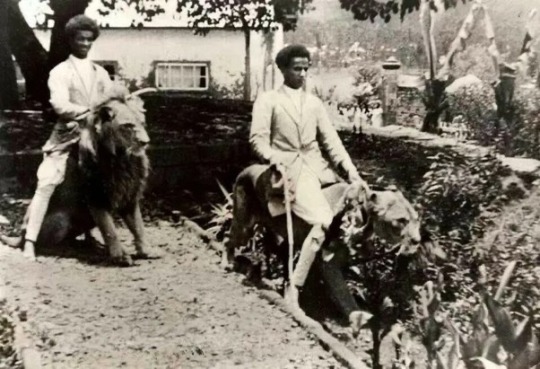
Meet his imperial majesty, the King of the Jungle.
And if, with his thick, shaggy mane Challa seems to have something of a frisky regal air about him - it's because he knows that he is a genuine blue blood.Challa is a direct descendant of Mochuria and Mollua - royal lions, which the late Emperor Haile Selassie kept as pets. The Emperor's practice of keeping pet lions is said to date thousands of years back to the Axumite period.Years ago in Ethiopia, Lions were pets to the people, some were used like donkeys, some like dogs kept at home. Emperor Haile Selassie of Ethiopia had lions he kept as pets, while some Ethiopians could even ride on them. These were not wild lions, they grew up with humans and became domesticated.They didn't go after human blood or other animals, lions roamed around the streets of Ethiopia and live was beautiful with them. Ethiopia is in East Africa, it's a rugged, landlocked country split by the Great Rift Valley, Ethiopia is a place of ancient culture, they believe and still hold on to ancient affairs.
Any lion that goes wild was immediately hunted killed, they were only killed if they kill a human and not animals like goats and chickens. They forbid killing and eating of any lion because lions were pets used in different palaces.
Ethiopia as a country had its origin in about 980 B.C., which makes it one of the oldest nations in the world.
Due to this very long history and an unmatched diversity of people and cultures, the country has often been described as a “museum of peoples”. With such a highly diverse population, Ethiopia houses an intricate tapestry of language and ethnic groups.
Also nicknamed the “Land of 13 Sunshine’s”, Ethiopia is often described as one of the most enthralling and enchanting places in the world – and definitely in Africa.
Ethiopia may not be the first place any traveller think of when planning or booking a next holiday, but it may just as well soon be the case. As African country Ethiopia can boast about having been at peace for at least the previous 15 years or more years and its economy is consequently one of the fastest growing in the world.
With the added bonus of an astounding diversity of landscapes, mixture of cultures and history that tracks back to when homo sapiens first started to raise itself up onto two legs, a traveller suddenly may look forward to a surprising and breath-taking travel destination.
But talking about planning and holiday dated, you probably didn’t know that this unique nation even has its own calendar?
This is but one of a myriad fascinating facts about the country, of which a number are discussed in this article. Looking at the country’s ancient and statutory history, its religion, culture, people and natural phenomena, here are at least 44 random but fascinating facts that you can ponder in anticipation of a visit to this eastern African country in the near future:
Fact number 1 – The oldest people in the world probably lived here.
Fact number 2 – Ethiopia is the oldest independent country in Africa and the only African country that could evade colonial rule.
Fact number 3 – Ethiopia was one of the first African forces to achieve a significant victory over a European colonial power.
Fact number 4 – Ethiopia has a rich history of rulers, including emperors and queens.
Fact number 5 – Ethiopia is perceived to be the diplomatic capital of the African continent
Fact number 6 – Ethiopia is the country with the second highest population in Africa, and with almost 1,5 % of the world population.
Fact number 8 – Ethiopia has the most orphans in the world.
Fact number 10 – Addis Ababa is the highest capital city in Africa.
Fact number 11 – More than 200 dialects are spoken by the peoples of the country.
Please like and share so others can see, drop your comments below and let me know what you think.
101 notes
·
View notes
Text
Soul Around The World
Soul music became popular around the world, influencing countless artists across the world. We’ve put together a list with awesome soul tracks form Africa, Asia, Europa and Latin America.

Soul Around The World in 30 songs
Asante Kwa Wazazi - Marehemu George Mukabi (Sengula Nakupenda, 196?) - Kenya
Assalam Aleikoum Africa - Francis Kingsley & Emitais (Assalam Aleikoum Africa, 1976) - Ivory Coast
Bailando en la Campiña - Los Orientales (Bailando en la Campiña - Los Orientales / Mosaico: Tres-En-1 -Tito Chicoma, 1974) - Peru
Beat For Two - Franco Micalizzi (I Due Volti Della Paura, 1972) - Italy
California - Azuquita Y Su Orquesta Melao (Pura Salsa, 1975) - Panama
Can't Give You Anything = No Puedo Darte Más Que Amor - Jaime Delgado Aparicio Y Su Orquesta Contemporánea (Jaime Delgado Aparicio Y Su Orquesta Contemporánea, 1976) - Peru
Come Back Baby - Theodore Nemy & His Band (Come Back Baby / Je Reviendrai, 1973) - Nigeria
Djanfa Magni (La Trahison N'est Pas Bonne) - Tidiani Kone Et Le T. P. Orchestre Poly Rythmo De Cotonou - Benin (Fangate Djangele Et Djanfa Magni, 1977) - Benin
Do The Good - The Future Hopes (How Can I Get To My God / Do The Good, 197?) - Nigeria
Dom Za Tebe - Zoran Milivojevic (Rastanak (My Women, My Women, My Wife) / Dom Za Tebe, 1974) - Yugoslavia
Fireman - Benis Cletin (Jungle Magic, 1979) - Nigeria
Kalabuley Woman - Pierre Antoine (Kalabuley Woman / Ye Man Noun (Our World), 1977) - Ivory Coast
Life’s Gone Down Low - The Lijadu Sisters (Danger, 1976) - Nigeria
Moni Ngan - Willie Songue accompagné par Les Showmen (Moni Ngan / Le Jour De Fete, 1974) - Cameroon
Moving World - Kelenkye Band (Moving World, 1974) - Ghana
Overture - Gibson Kente (How Long, 1978\3) - South Africa
Papa's Black Dog - Pazy And The Black Hippies (Wa Ho Ha, 1978) - Nigeria
Pele Rein - Les Loups Noirs (Jouent Pour Vous, 1970) - Haiti
Sound Beat - The Beat Fellows (Sound Beat / Hand In Hand, 1970) - Belgium
Speedy Buggy - Orchester Fritz Maldener (Speedy Buggy, 1972) - Germany
Tilantina Zarie - Alemayehu Eshete (Konjit / Tilantina Zarie, 1974) - Ethiopia
Tsegulani - Musi-O-Tunya (Tsegulani / One Reply, 1973) - Zambia
Tsi Ma Leto - Les As Du Golfe (Les As Du Golfe En Action Vol.1, 197?) - Togo
Ultima Caccia - Giuliano Sorgini (Zoo Folle , 1974) - Italy
Viertel Vor Neun Viertel Vor Zehn - Zanki (Jetzt Komm' Ich, 1977) - Germany
Voodoo Moon - Jackie Mittoo And The Soul Brothers (Last Train To Skaville, 2003) - Jamaica
Wake The Monster - Big Jullien And His All Star (Riviera Sound N°1, 1970) - France
Wait For Me - Roger Damahouzan (Xede Nge / Wait For Me, 1972) - Togo
You Fool, You Fool - The Prophet and His Disciples (You Fool, You Fool / The Pusher, 197?) - Ghana
Zulu Lunchbag - Ndikho Xaba & The African Echoes (Zulu Lunchbag / Big Time, 1968) - South Africa
More Soul Around the World
Soul Around The World in 34 songs
Soul Around The World in 27 Songs
Soul Around the World in 20 tracks
Soul Around The World in 22 tracks
Soul Around The World in 33 songs
10 notes
·
View notes